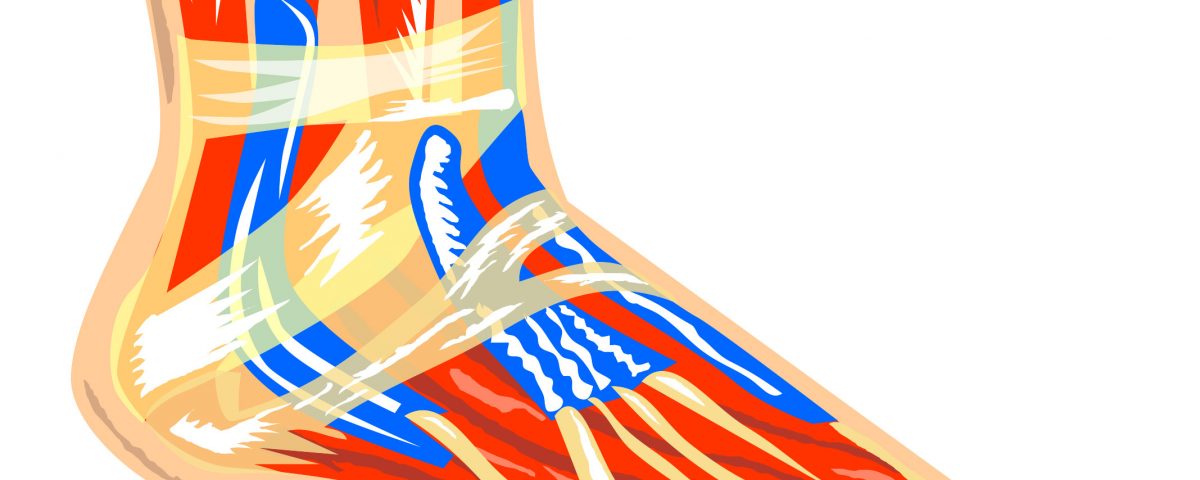Plantar Fasciitis – One step at a Time!

Achilles Tendinopathy
October 6, 2020
Common Gym Injuries – Knee
November 26, 2020Plantar Fasciitis – One step at a Time!

What Is Plantar Fasciitis
Do you feel pain at the back of the heel, causing you to limp the first few steps in the morning? You may have Plantar Fasciitis.
The plantar fascia (plantar aponeurosis) is found under the foot. It is a thick fibrous band of connective tissue that extends from the calcaneus (heel bone) to the toes. This forms a ‘trampoline’ under the arch, one springy arch between points of contact. This structure is optimised for transferring load from the ground to the rest of the body. The plantar fascia provides static support of the arch and dynamic shock absorption of the foot during standing and dynamic movements
The plantar fascia guides the shape of the foot during walking and running. As the toes extend during the push off phase in walking/running, the plantar fascia becomes taught and lifts the arch of the foot (supination). During heel strike, the plantar fascia is under low tension and the arch is guided towards a lower position (pronation). This changes the spring and stiffness of the foot which makes running and walking more efficient.
The “itis” in Plantar Fasciitis refers to the inflammation component of the plantar fascia at its attachment to the heel bone.
Where does it come from?
Pain is usually felt at the bottom of the foot or around the heel. Patients usually complain of pain during the first few steps after waking up with pain reducing after 5-10minutes walking or after a long period of walking / sitting. This injury is usually insidious and can worsen gradually. Unfortunately, the literature is inconclusive! There is not one cause of plantar fasciitis, however you’re more likely to experience plantar fasciitis in middle age, recent weight gain, changes in load in exercise, changes in foot wear or mechanical deficits.
There are two types of plantar fasciitis: traction and compression. Traction plantar fasciitis comes from traction forces from repeated over stretching and weakness in the intrinsic muscles of the foot. Compression plantar fasciitis comes from a traumatic mechanism ie. Stepping on a sharp object. Determining which type of plantar fasciitis you have can help us determine the best treatment option for recovery.
In chronic cases a bone/heel spur may be present in the foot. This is a bone growth that appears in result of repetitive strain on the plantar fascia where it attaches to the heel of the foot.
What can we do for it?
Initial treatment is focused on narrowing down the cause of your pain and ruling out any other possible diagnosis. Factors we thoroughly assess include impairments of the body, muscle imbalances, dysfunctional foot biomechanics, running and gait styles (ie. Rear foot, mid foot or forefoot runner). Our goal is to kick start the healing process and reduce your pain. First steps are usually eliminating any aggravating factors: if it hurts when you do something, stop doing it!
Treatment may include manual therapy of the surrounding muscles and joint mobilisations, dry needling and taping (especially in the initial phase). Once pain is managed, we can move on to an exercise program to strengthen limitations such as calf bulk, hamstring length, foot biomechanics or gluteal strength. We start with static exercises such as heel raises and then progress to more dynamic / sport specific exercises . Here at City Physio, we can also assess your walking/running patterns and technique to prevent further recurrence of the problem and prescribe advice on managing your running load.
Rarthleff et al (2015)* looked at the effectiveness of plantar fascia specific high load stretching and stretching vs shoe inserts for plantar fascia. The study concluded that high load strength training such as unilateral heel raises with a towel under the foot may aid in quicker recovery and improve in function.
Plantar fasciitis can be bearable until it is not! A physiotherapist will be able to assess, treat and tailor a program to help you reach your goals. Structuring your load is key to get back to your prime!
Rathleff, M; Molgaard, C; Fredberg, U; Kaalund, S; Andersen, K; Jensen, T; Aaskov, T & Olesen, J. (2015). High-load strength training improves outcome in patients with plantar fasciitis: A randomized controlled trial with 12-month follow-up. Scand J Med Sci Sports

